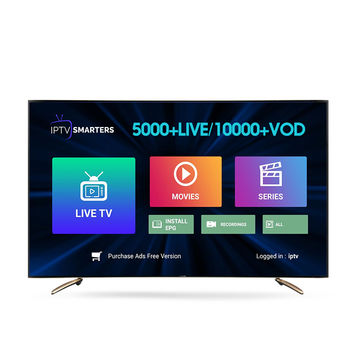Improve Your Watching Experience: IPTV Subscription with Comprehensive Networks
Improve Your Watching Experience: IPTV Subscription with Comprehensive Networks
Blog Article
Just How IPTV Works: A Step-by-Step Overview to Web Procedure Tv Innovation
Net Procedure Tv (IPTV) has changed the method we take in television content, using a new realm of possibilities through the power of the internet. Understanding the intricacies of exactly how IPTV functions can clarify the technology that drives this cutting-edge kind of media shipment. From the essential principles of IPTV to the complex procedure of material distribution, each action plays a vital function in making sure a smooth viewing experience. In this guide, we will certainly discover the underlying devices that make IPTV a remarkable blend of modern technology and entertainment.
IPTV Fundamentals
In comprehending IPTV essentials, it is pivotal to realize the fundamental operations of this technology in supplying television web content over the web. IPTV, which stands for Web Protocol Television, uses Net Protocol (IP) networks to send tv content to users' gadgets. Unlike traditional techniques of relaying tv web content through wire or satellite signals, IPTV streams media with high-speed net links.

Moreover, IPTV enables for interactive abilities, such as video clip as needed (VOD) and electronic program overviews (EPG), enhancing the individual experience by giving even more control and flexibility in accessing web content. In general, understanding the fundamentals of IPTV establishes the foundation for discovering its advanced performances and the benefits it offers to modern television consumption.
Content Shipment Refine
Reliable content delivery in IPTV systems includes a well-structured process that ensures seamless transmission of tv content over IP networks. The material shipment procedure in IPTV starts with the creation of the video web content, which is after that inscribed right into electronic style ideal for IP transmission. This encoded material is after that firmly stored on web servers called media servers. When a customer requests details content, the IPTV system obtains the requested data from the media servers and provides it to the audience's tool online.

Middleware Functionality
With the assimilation of middleware, IPTV systems gain improved performance that streamlines customer communication and material administration. Middleware functions as an important component that links the void in between the user Find Out More interface and the back-end framework, promoting seamless communication and communication within the IPTV system. One of the vital functions of middleware in IPTV is to make it possible for personalized individual experiences by giving features such as interactive program guides, video-on-demand services, interactive marketing, and customer preferences monitoring. By click for info centralizing these functionalities with middleware, company can provide a much more dynamic and customized IPTV experience to their subscribers.

Gadget Compatibility
Provided the essential role of middleware in enabling smooth interaction and material management in IPTV systems, a vital aspect to think about is the compatibility of gadgets made use of for accessing the IPTV solutions. Tool compatibility is important for ensuring a smooth customer experience and ideal efficiency when accessing IPTV material.
In the context of IPTV, tool compatibility describes the ability of a device to successfully communicate with the IPTV service, show material appropriately, and support the required methods and codecs for streaming video content online. Different gadgets, such as smart TVs, set-top boxes, smartphones, tablets, and computer systems, might have varying degrees of compatibility with IPTV services.
To ensure a smooth watching experience, it is vital for individuals to choose tools that are compatible with the particular IPTV service they are making use of. Furthermore, IPTV provider need to offer support for a variety of gadgets to deal with the varied needs of their customer base. By focusing on tool compatibility, both users see this and provider can improve the general IPTV experience.
Top Quality of Service (QoS)
Considering the essential role of keeping a high standard of performance and integrity in IPTV systems, ensuring consistent Top quality of Solution (QoS) continues to be a fundamental aspect of the individual experience. QoS in IPTV describes the ability of the system to deliver content with minimal interruptions, high resolution, and fast packing times. To achieve optimum QoS, various elements require to be attended to. Network transmission capacity is critical to sustain high-grade video streaming without buffering or pixelation. In addition, latency, jitter, and packet loss need to be reduced to boost the viewing experience.
Provider employ QoS devices such as traffic prioritization, buffering, and error adjustment to maintain a steady IPTV solution. By prioritizing IPTV website traffic over less time-sensitive information, carriers can make sure smooth playback even during top use hours. Buffering aids compensate for network fluctuations, while error adjustment methods boost data integrity.
Constant surveillance and optimization of QoS criteria are important to adapt to changing network conditions and individual demands. Ultimately, a robust QoS structure is important for delivering a smooth and pleasurable IPTV experience to customers.
Conclusion
In final thought, IPTV operates through the transmission of tv content over web procedure networks. Quality of Solution plays a critical function in maintaining the performance and reliability of IPTV solutions - IPTV subscription.
Report this page